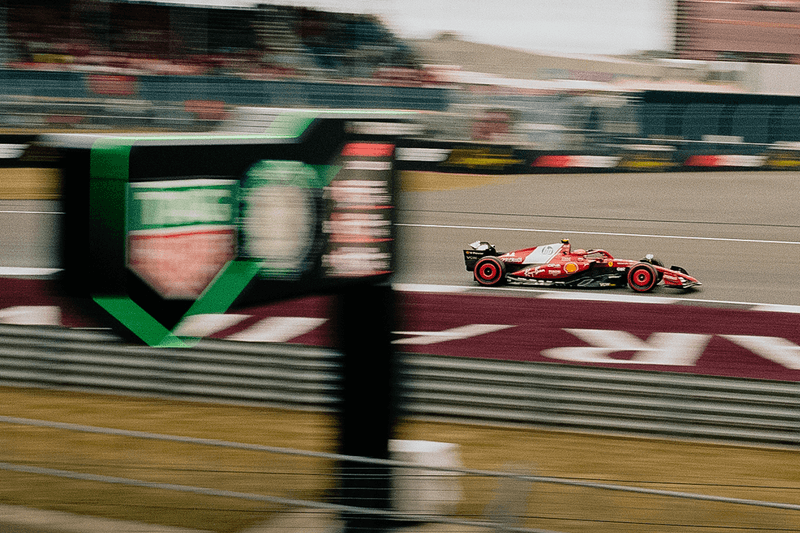
During the latter part of last month, the tranquil English village of Silverstone, Northamptonshire, transformed into the epicenter of global racing. Not only had the 2025 Formula 1 season, one of the most competitive in years, reached its midpoint, but the forthcoming week was significant for this storied British circuit. Despite the scorching heatwave, countless enthusiasts converged on temporary campsites scattered across neighboring farmland, while celebrities from far and wide made their way to the track – equally keen to be spotted as they were to witness the excitement. In all, over half a million people would pass through Silverstone’s gates during that week, establishing a new record for attendance.
2021 saw the British Grand Prix at Silverstone celebrate its 75th event, as 20 drivers from 10 teams contended for championship points and a spot in racing history. The starting lineup was a melting pot of experienced racers, newcomers, and up-and-coming talents. Notably, Sir Lewis Hamilton, a seasoned nine-time Silverstone winner, made his debut as a Ferrari driver at home. However, this event didn’t bring Hamilton the victory he sought; he qualified in fifth place and finished fourth. Similarly, Max Verstappen, the current World Drivers’ Champion, had an underwhelming race: starting from pole position, he ended up where Hamilton began.
At the far end of the racing grid, Nico Hülkenberg, a 39-year-old German driver for Sauber, was preparing to participate in his 240th career race in Formula 1 and his 13th at Silverstone, finding himself in 19th place. This was an undesirable position for any driver, made even more difficult by the fact that Hülkenberg had never managed a podium finish in his previous 239 races – a record he reluctantly held. However, on that bright July day, fortune seemed to favor him and the number 13 would prove to be his lucky charm: Hülkenberg would end up finishing third, sharing the podium with the McLaren duo for his inaugural Formula 1 podium finish.
Silverstone, often referred to as the heart of Formula 1 racing, has always been a stage for thrilling events filled with unpredictability. This historic circuit was where the modern concept of the Formula One World Championship began, with the 1950 British Grand Prix marking its debut. The event was won by Alfa Romeo’s Italian driver Giuseppe “Nino” Farina. Interestingly, this race took place during late Spring in May and had a starting grid of 21 cars, which included an impressive nine British drivers – triple the number that participated in the 2025 version. However, only three drivers managed to complete the 70-lap race: Farina, Luigi Fagioli (also Italian), and Reg Parnell from Britain. Indeed, it seems we can’t deny that Silverstone is steeped in drama!







Over the past seven and a half decades, there’s no denying that I’ve been captivated by some of the most thrilling moments in Formula 1 history, all thanks to the British Grand Prix. Originally built on what was once a Royal Air Force base, this circuit is renowned for its toughness, not just because of the occasional erratic, rain-drenched English summers. The track itself tests both a driver’s physical and mental mettle as well as the team’s engineering genius at every turn.
Take, for instance, the legendary “Maggotts and Becketts” bends that stretch between turns 10 and 14. These twisting sections of track have become iconic in the sport, pushing both man and machine to their limits.
Although Silverstone is renowned for its timeless charm as a racing circuit, it has also managed to keep pace with and adapt to modern times. In 1950, the average speed was approximately 91 mph, contrasting with 145 mph in 2025; at the same time, the initial track length was roughly 2.88 miles, whereas today it stretches to 3.66 miles. Since undergoing significant changes in 1975 – the first year Silverstone saw major modifications, including the addition of its first chicanes – the British Grand Prix has experienced numerous substantial updates throughout the years. The focus on sheer speed from the early days has transformed into one of Formula 1’s most comprehensive circuits. Modern-day Silverstone boasts sections that strike a balance between high-speed and technical prowess, offering challenges to drivers during races while also contributing to broader advancements in the sport, such as enhancing drivers’ skills, team comprehension of car dynamics, and design innovations.
Silverstone is a place where tradition and excitement intertwine. This year’s victor, Lando Norris of McLaren, belongs to Formula 1’s emerging generation – drivers who have risen during an era marked by swift technological and cultural advancements. The 25-year-old British driver and his 24-year-old Australian teammate, Oscar Piastri, have been closely matched at the top of the F1 standings throughout the season – a fierce competition that mirrors their ongoing rivalry. This intense rivalry is unfolding in real-time, potentially paving the way for what follows after the popularity of Netflix’s hit series Formula 1: Drive to Survive has diminished.
In an unprecedented fusion of culture and motor racing, this year’s British Grand Prix broke new ground with Nigerian-British artist Slawn designing the Racing Bulls’ vehicle – a first for both parties as the artist himself described it. As sports and culture intertwine further and technology rapidly evolves, it’s intriguing to speculate about how Formula 1 might transform over the next 75 years.
Read More
- Silver Rate Forecast
- Красный Октябрь акции прогноз. Цена KROT
- Gold Rate Forecast
- MSCI’s Digital Asset Dilemma: A Tech Wrench in the Works!
- Bitcoin’s Ballet: Will the Bull Pirouette or Stumble? 💃🐂
- Brazil Bank & Bitcoin: A Curious Case 🤔
- Monster Hunter Stories 3: Twisted Reflection gets a new Habitat Restoration Trailer
- Dogecoin’s Big Yawn: Musk’s X Money Launch Leaves Market Unimpressed 🐕💸
- Itaú’s 3% Bitcoin Gambit: Risk or Reward?
- The Crypto Hustle: Bitcoin Rodney and the $1.8 Billion Pyramid Collapse
2025-08-04 22:26